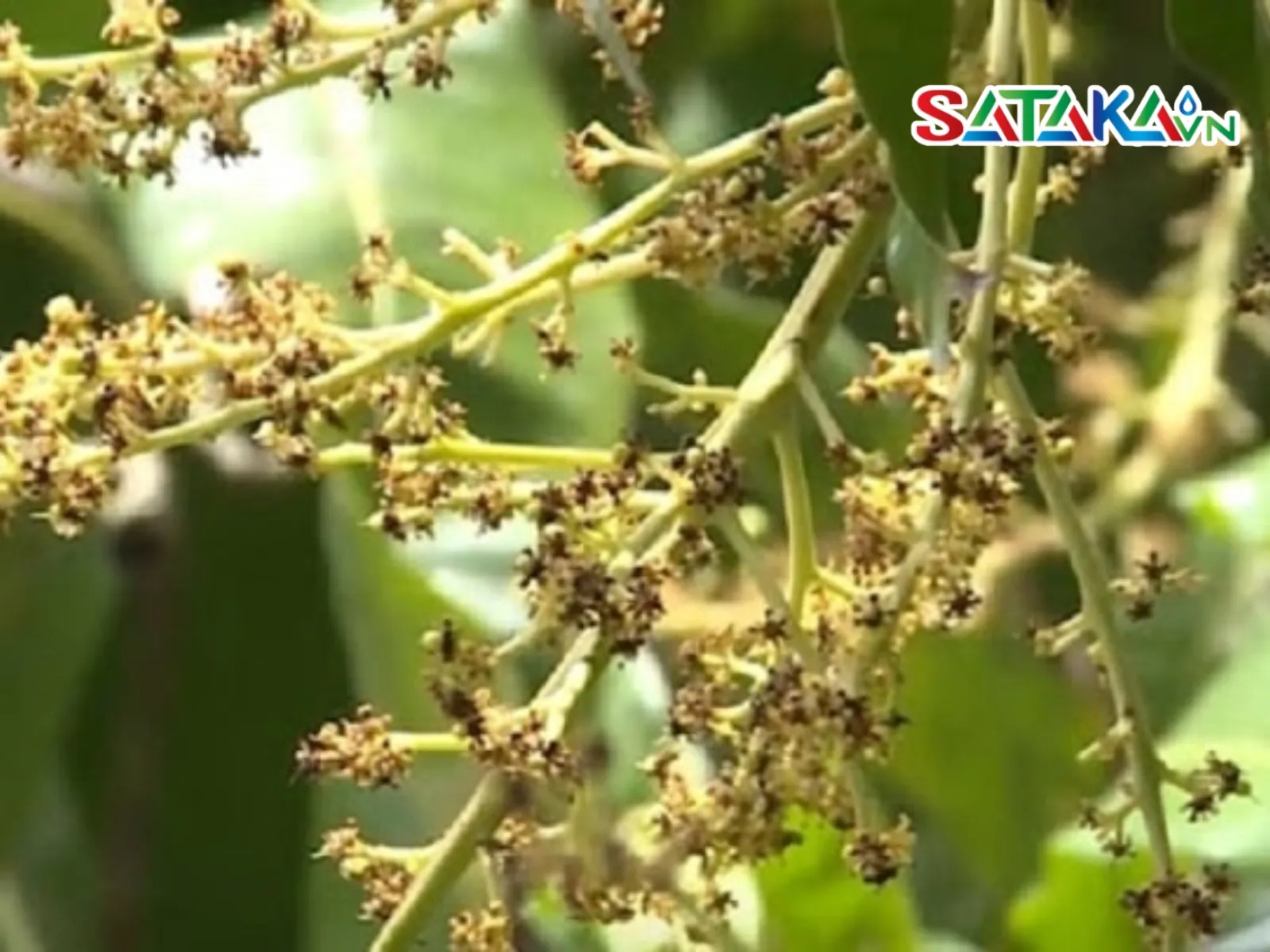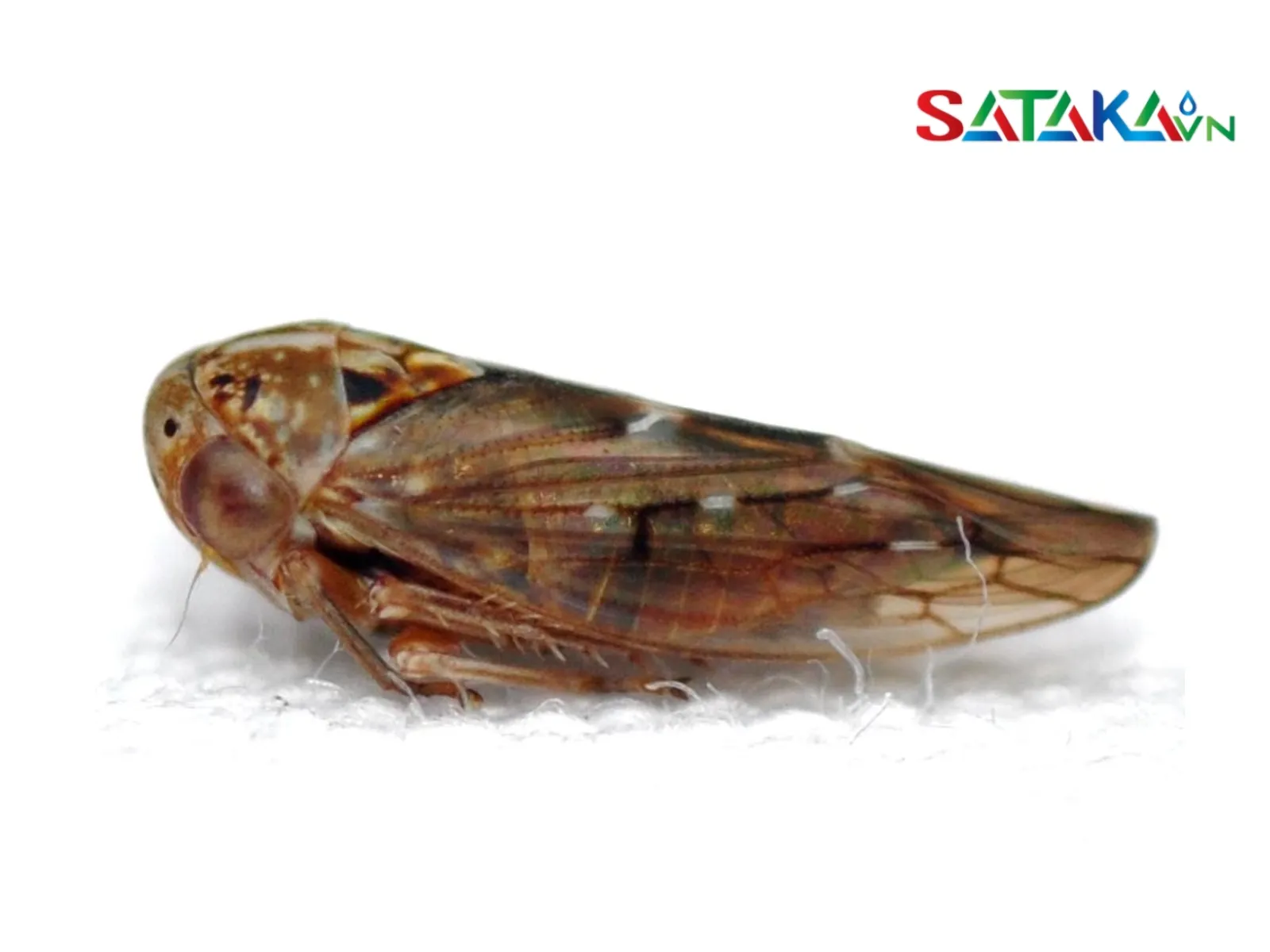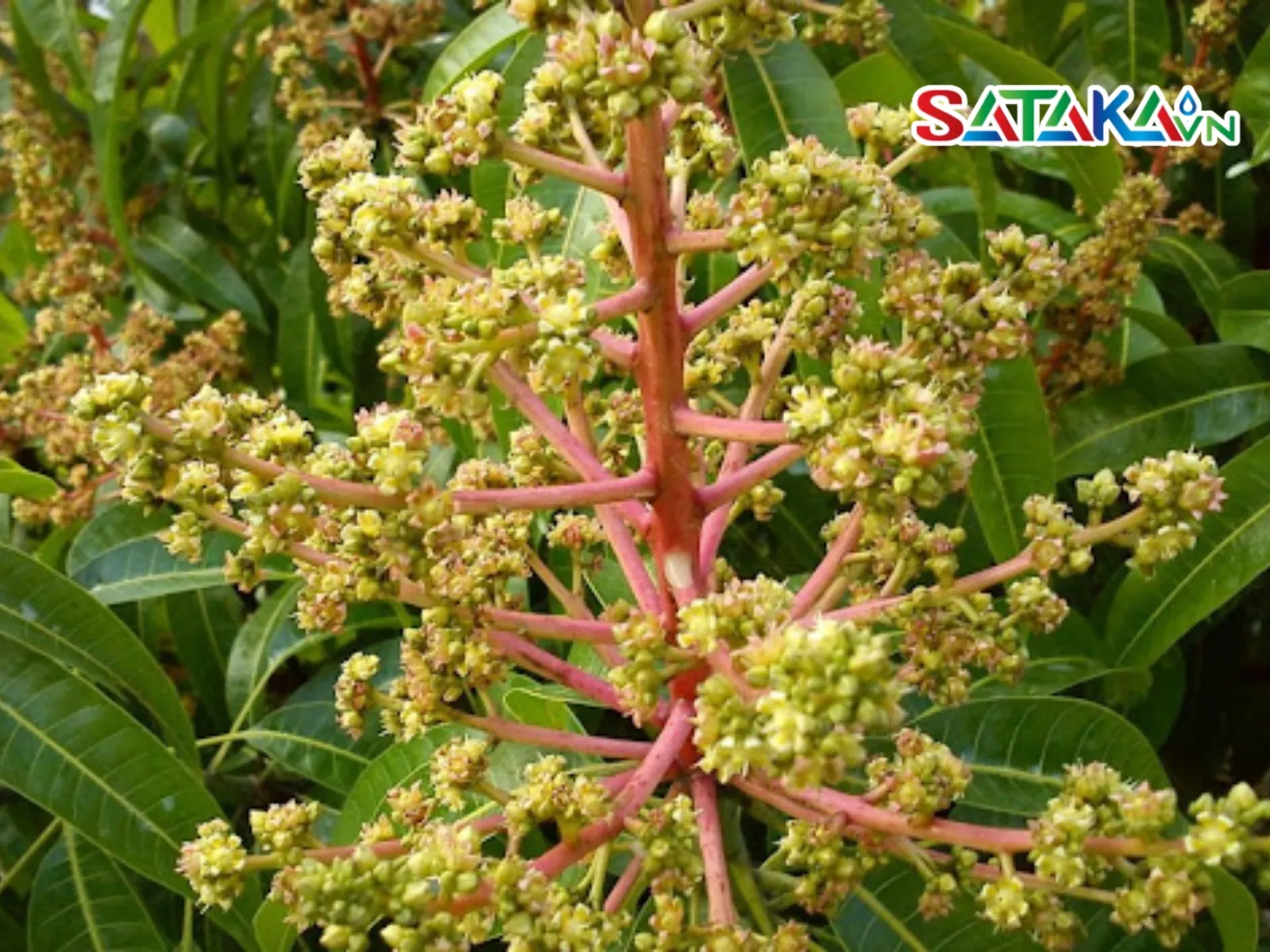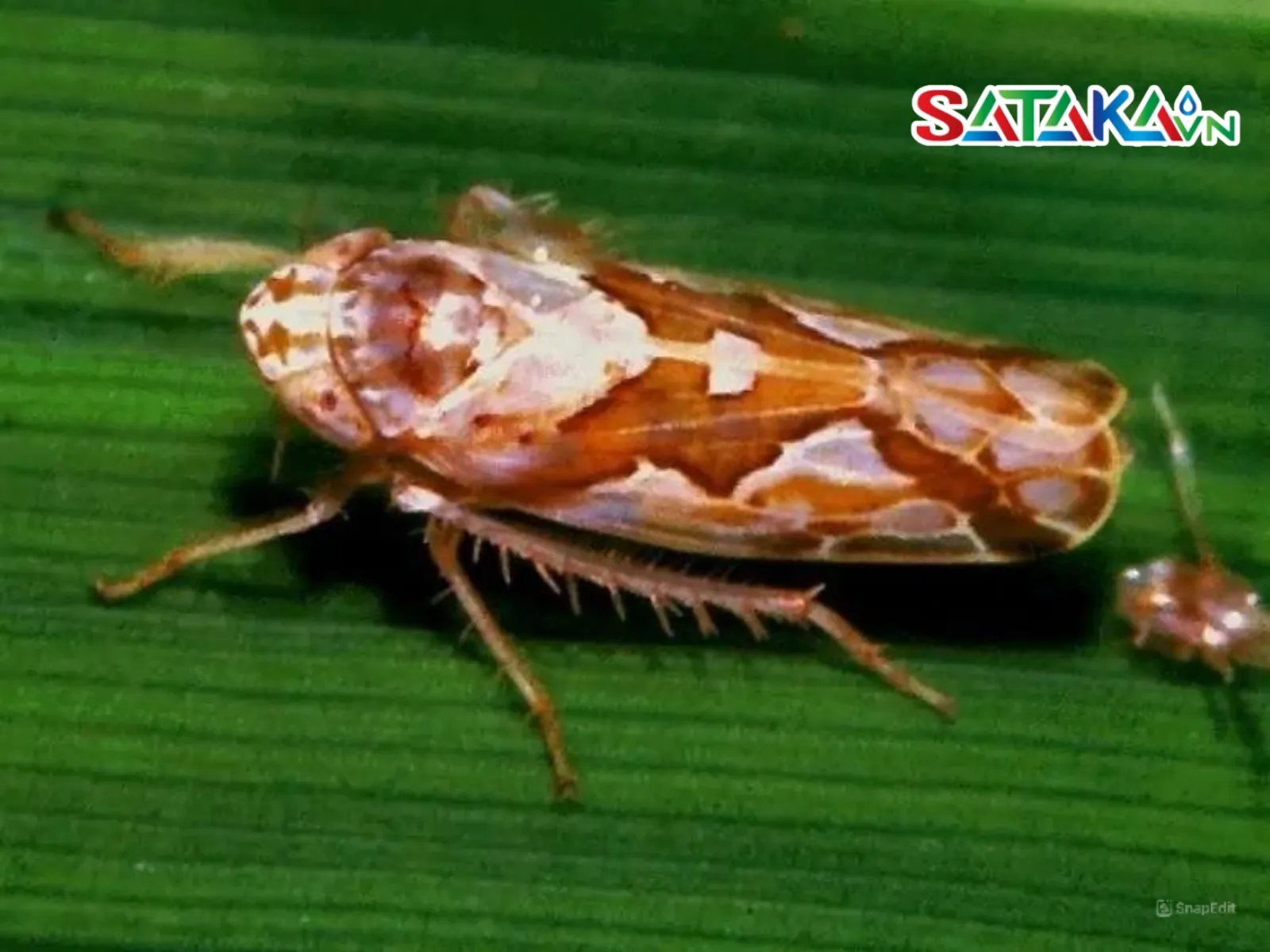Learn about mango leafhoppers, their harmful effects on mango trees and effective prevention measures to protect a bumper crop!
Mango Leafhopper
The mango hopper is a significant pest that severely affects mango trees, especially during flowering and fruit-setting stages. Its infestation weakens the tree, reducing both yield and fruit quality. Understanding its characteristics, signs of infestation, and effective control measures is essential to protect mango trees. Let’s explore how to care for and safeguard your mango crops to ensure a bountiful harvest.
1. What Is the Mango Hopper?
The mango hopper, scientifically known as Idiocerus niveosparsus, is a common agricultural pest, particularly for mango trees. To better understand this pest, we need to examine its biological traits and the damage it causes to mango trees.
1.1. Biological Characteristics of the Mango Hopper
The mango hopper has distinct features, measuring about 4 mm in length. Adults have brown wings with a white band near the thorax. Its lifecycle includes three stages: egg, nymph, and adult.
- Eggs: Freshly laid eggs are white and turn yellow before hatching. The incubation period ranges from 4 to 7 days.
- Nymphs: Nymphs are milky white and pass through five instars over 8 to 10 days before maturing.
- Adults: Mature hoppers move to shoots and young leaves to lay eggs. Female hoppers scatter their eggs into the bases of young shoots, creating favorable conditions for nymph development.

Characteristics of mango flower hoppers
1.2. Damage Caused by Mango Hoppers
Mango hoppers cause severe harm to mango trees by sucking sap, leading to symptoms like stunted leaf growth, curled leaves, and dry edges. When they attack flowers, the flowers may dry out and drop, directly impacting the tree’s yield.
High hopper densities can prevent mango trees from flowering and cause premature fruit drop. Additionally, the sugary excretions of hoppers attract sooty mold, which blocks photosynthesis and weakens the tree further.
2. How to Identify Mango Hopper Infestation
Here are simple yet effective ways to detect the presence of mango hoppers on your trees:
2.1. Observe External Features
Mango hoppers are small, measuring about 4 mm, with brown wings and a white band. Nymphs are milky white and are commonly found on young leaves and shoots.
2.2. Listen for Sounds
Mango hoppers produce faint sounds as they move, which can help you quickly identify their presence.

Signs of leafhoppers appear on mango flowers
2.3. Inspect Plant Parts
- Young Shoots: Hoppers often lay eggs on young shoots. Check for small wounds or white/yellow eggs in these areas.
- Flowers: During flowering, inspect flowers for signs of sap-sucking damage, dryness, or early drop, which may indicate hopper activity.
- Young Leaves: Hoppers focus on young leaves, making it easier to spot signs of damage. Look for distorted, dry, or curled leaves.
2.4. Recognize Symptoms
Infested mango trees display several symptoms, such as:
- Curled leaves that fail to develop properly.
- Dry leaf edges, reducing tree vitality.
- Stunted flowers and premature fruit drop caused by sap-sucking activity.
3. Control Measures for Mango Hoppers
Protecting mango trees from hoppers requires effective control measures. Below are agricultural, biological, and chemical methods to manage mango hoppers:
3.1. Agricultural Methods
- Pruning and Canopy Management: Prune branches to improve airflow and reduce moisture, which creates unfavorable conditions for hoppers. Proper canopy management also ensures adequate sunlight exposure, boosting tree health.
- Balanced Fertilization: Provide appropriate nutrients to strengthen the tree’s resistance against pests. Avoid over- or under-fertilization to prevent weakening the tree.
- Regular Watering: Maintain consistent and adequate watering to promote healthy growth. A robust tree can better withstand hopper infestations.
- Field Hygiene: Clean the orchard by removing weeds and crop residues to minimize hopper habitats.

How to prevent mango leafhoppers
3.2. Biological Methods
- Encourage Natural Predators: Beneficial insects like ladybugs and certain ants prey on mango hoppers. Supporting these predators helps maintain ecological balance and reduce hopper populations naturally.
- Use Entomopathogenic Fungi and Bacteria: Microorganisms like Beauveria bassiana and Metarhizium anisopliae effectively control hoppers by infecting and killing them naturally.
3.3. Chemical Methods
- Biological Pesticides: Environmentally safe biological pesticides effectively control hoppers without harming beneficial insects or the tree. Choose certified and tested products.
- Chemical Pesticides: If hopper densities are too high and other methods prove ineffective, use chemical insecticides. Ensure proper dosages and timing to minimize environmental impact and protect tree health.
4. Mango Tree Care to Prevent Mango Hoppers
Follow these care techniques to minimize mango hopper infestations:
- Choose Resistant Varieties: Select mango varieties resistant to pests and diseases.
- Proper Watering: Ensure sufficient watering during dry seasons and good drainage during rainy seasons.
- Regular Fertilization: Use organic and chemical fertilizers appropriately to provide nutrients.
- Apply Foliar Fertilizers: Foliar sprays enhance nutrient absorption and improve pest resistance.
- Regular Monitoring: Inspect tree health periodically to detect hopper infestations early.
- Field Hygiene: Remove weeds and crop residues to reduce pest hiding spots.
- Support Natural Predators: Plant companion crops to attract beneficial insects that prey on hoppers.
- Control Humidity: Avoid excessively high humidity to deter hopper development.
- Crop Rotation: Rotate crops annually to reduce pest populations.

How to help limit mango leafhoppers
5. Frequently Asked Questions
5.1. When Do Mango Hoppers Appear?
Mango hoppers typically emerge during the flowering stage, usually in spring and early summer. Warm and humid weather accelerates their population growth, making regular monitoring during this time crucial.
5.2. How Can I Detect Mango Hoppers Early?
To detect mango hoppers early:
- Regular Inspections: Check shoots, leaves, and flowers for signs of hopper activity.
- Listen for Sounds: Pay attention to faint sounds indicating their movement.
5.3. Is Preventive Spraying Necessary?
Preventive spraying is not always necessary. Only spray insecticides when hoppers are detected or their population exceeds the threshold. Prioritize agricultural and biological control methods before resorting to chemical pesticides. When using chemicals, select safe products and follow dosage instructions to protect the environment and tree health.

Monitor mango gardens regularly to detect leafhoppers early
Effective management of mango hoppers is vital for maintaining tree health and ensuring high yields. Stay updated with Sataka's website for more tips and techniques to keep your mango trees healthy and produce top-quality fruits!




